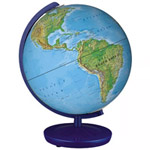Global Integrative Studies, School of
Date of this Version
7-1-2003
Document Type
Article
Citation
NORSEC 7 (July 1, 2003)
Selhagi 01
A product of the North Atlantic Biocultural Organization (NABO) Research Cooperative
Abstract
In 2001 the FSl / NABO project Landscapes of Settlement in Northern Iceland collected animal bones from a stratified midden deposit associated with the abandoned site Selhagi on the property of the modern farm Haganes. Selhagi is located in the lushly vegetated lakeshore zone and its environmental setting presents a strong contrast with the eroded uplands to the S of the lake where the early sites at Sveigakot and Hrísheimur are under excavation. Close to both major migratory waterfowl nesting areas and some of the best trout fishing in Iceland, the site would appear to be optimally located for exploitation of wild species. The Selhagi site had produced well preserved animal bone during small scale avocational excavations in the 1970’s and the major objective of the 2001 FSl /NABO investigations was to map the site and locate possible midden deposits for further work. The fully turf covered site appears to be a small multi-roomed structure with clearly defined room depressions and an apparent mound of midden material to the NW of the structure complex. Coring within the structure indicated that it was abandoned some time before the widespread AD 1477 ash fall and shows the presence of the 1104 and 1158 tephras as well. The midden team carried out a small-scale (2 x 2 m) stratigraphic test excavation which found well preserved animal bone in clearly stratified midden deposits that were definitely capped by the AD 1477 ash fall and probably also by a thinner 1300 tephra. Two AMS radiocarbon dates on cattle bone from the same context in the upper midden produce a closely consistent one sigma range from late 11th to mid 12th century. At base, the midden deposits directly overly the local variant of the “Landnám” tephra of c. AD 871. It would appear that Selhagi has a long occupational history extending from settlement times to the later 12th to early 13th century. An analysis of the animal bones recovered indicate the normal range of domesticates (cattle, sheep, goat, pig), substantial amounts of freshwater fish (trout and char), and a few migratory birds (duck and swan) as well as bird egg shell. More surprising is the presence of marine fish (cod family) and sea birds (Guillemot/Murre and Razorbill). Despite the lakeshore setting, the Selhagi archaeofauna thus far does not indicate any intensive exploitation of adult migratory waterfowl. This small initial sample does indicate that the site participated in a social and economic network that provided regular access to distant marine resources. While larger samples are needed to better understand possible trends through time, the present sample shows an apparent reduction in cattle relative to caprines (sheep and goat) from lower layers to upper that parallels a general reduction in domesticates relative to wild species. Further investigations at this promising site are needed to better document these apparent trends and better understand the economic changes at Selhagi during its period of occupation.
Included in
Animal Studies Commons, Anthropology Commons, Environmental Policy Commons, Geography Commons, International and Area Studies Commons


Comments
Copyright 2003, the authors. Used by permission.